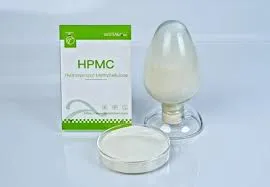
Nov . 09, 2024 00:43 Back to list
Types and Applications of Redispersible Polymer Powder for Construction and Coatings
Understanding Redispersible Polymer Powder Types
Redispersible polymer powders (RDPs) are essential additives used in a variety of construction materials and applications. They are typically produced by drying aqueous dispersions of polymers into fine, free-flowing powders. RDPs are prized for their ability to improve the performance characteristics of mortar, plaster, tile adhesives, and other construction-related formulations. This article will tackle the various types of redispersible polymer powders, their properties, and their applications.
Types of Redispersible Polymer Powders
RDPs can be classified based on the polymers they are derived from, including vinyl acetate, ethylene-vinyl acetate (EVA), styrene-acrylic, and pure acrylics. Each type has distinct properties that make it suitable for specific applications.
1. Vinyl Acetate Polymers These are one of the most commonly used RDPs. Vinyl acetate offers good adhesion properties, flexibility, and water resistance. It is often found in tile adhesives and dry-mix mortars where high bond strength is crucial.
2. Ethylene-Vinyl Acetate (EVA) EVA polymers provide excellent flexibility and elongation properties. They are particularly effective in enhancing the impact resistance of construction materials. As a result, they are often utilized in products that require greater flexibility, such as exterior insulation and finish systems (EIFS).
3. Styrene-Acrylic Polymers Known for their superior water resistance and adhesion, styrene-acrylic RDPs are frequently used in applications requiring low permeability, such as waterproofing membranes. They are ideal for exterior applications due to their excellent weather resistance and durability.
4. Pure Acrylic Polymers These are used where high performance in terms of adhesion and durability is required. Acrylic RDPs are particularly favored in high-end applications, such as premium-quality coatings and sealants, due to their outstanding resistance to UV light and weathering.
Properties and Benefits
The performance of RDPs lies in their unique physical and chemical properties. When mixed with water, these powders rehydrate and disperse, creating a stable emulsification that enhances the performance of the base materials. The key benefits of using RDPs include
- Improved Adhesion RDPs enhance the bonding strength of mortars and adhesives, leading to better performance in actual applications.
redispersible polymer powder types

- Flexibility and Elasticity Many RDPs provide materials with increased flexibility, reducing the likelihood of cracking under stress or movement
.- Water Resistance RDPs improve the water-repellent qualities of construction materials, making them suitable for exterior applications in wet climates.
- Enhanced Workability The inclusion of RDPs can improve the workability of mixtures, making them easier to apply and spread.
Applications
Redispersible polymer powders have a broad range of applications across the construction industry. Common uses include
- Tile Adhesives RDPs are crucial in formulations for tile adhesives, providing strong bonding capabilities while allowing for slight movement without cracking.
- Mortar and Plaster In cement-based products such as mortar or plaster, RDPs enhance flexibility and adhesion, leading to improved durability.
- Dry-Mix Products The RDPs allow for the creation of dry-mix formulations that can be easily transported and applied, as they only require the addition of water at the job site.
- Self-Leveling Compounds They enhance the flow and leveling properties of these materials, making them easier to work with and produce a smooth finish.
Conclusion
Redispersible polymer powders play a crucial role in improving the performance and durability of various construction materials. By understanding the different types of RDPs and their properties, manufacturers and applicators can select the right product for their specific applications, ensuring optimal outcomes. As the construction industry continues to evolve, the use of RDPs will likely expand, further enhancing the quality and longevity of modern building materials.
-
Versatile Hpmc Uses in Different Industries
NewsJun.19,2025
-
Redispersible Powder's Role in Enhancing Durability of Construction Products
NewsJun.19,2025
-
Hydroxyethyl Cellulose Applications Driving Green Industrial Processes
NewsJun.19,2025
-
Exploring Different Redispersible Polymer Powder
NewsJun.19,2025
-
Choosing the Right Mortar Bonding Agent
NewsJun.19,2025
-
Applications and Significance of China Hpmc in Modern Industries
NewsJun.19,2025







